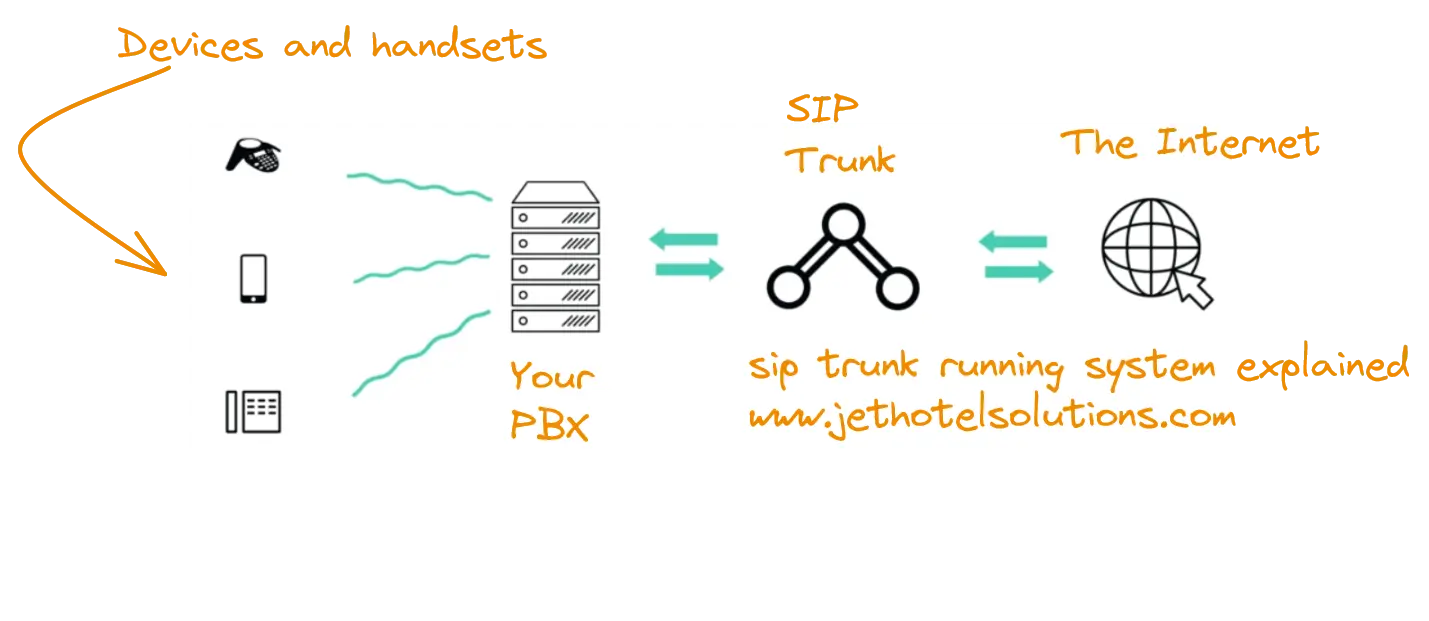Maybe your internet phone service seems glitchy lately. Calls disconnect randomly or go straight to voicemail. Audio quality sounds muffled or echoey. Or you simply can’t make outgoing calls due to an “all circuits busy” message.
If you utilize SIP trunk technology for your business voice and video calls, pesky problems like these typically point to an underlaying issue with the SIP software or network setup. Fret not! Many SIP trunk troubles stem from rather straightforward mix-ups that you can identify and fix yourself without waiting around for specialized technicians.
Let’s walk through common places where SIP trunks trip up and how you can troubleshoot step-by-step. Diagnosing the root cause sets you on the path to restore smooth connectivity and clear calling.
Back to Basics: What Makes SIP Trunks Work?
Before diving into the troubleshooting nitty gritty, let’s quickly recap how SIP trunks function normally:
SIP uses “channels” for each call to route voice traffic over the internet (VoIP) rather than traditional phone lines.
A SIP server facilitates registration and connections for endpoints like desk phones and computer softphones in an office.
Unique codes (akin to phone numbers) identify each endpoint to correctly direct call data.
The corporate network links phones to the SIP server and out to the internet pathways that carry call traffic.
So in essence, SIP trunks depend on endpoint registration, underlying networks, servers, and addressing all working in harmony. When anything falls out of sync, calls fail.
1. Verify Network Capacity
Since SIP communicates via internet data pathways, start troubleshooting by validating your network’s setup supports usage needs. Two common shortfalls underlie lots of problems:

SIP encoding requires about 100 kbps bandwidth per call. Is your internet plan’s speed rated higher than your max number of concurrent calls times 100 kbps? If not, throttled data flow impedes call connectivity and voice quality.
Latency Prone Config
Using WiFi for desk phones, low priority traffic routing, VPN connections, or other network architecture choices can introduce latency and jitter. SIP’s real-time sensitivity balks as timing gets skewed. Reassess architecture.
2. Check Endpoint Registration Status
Can all phones/softphones register properly with your SIP server? Traffic issues often block complete registration handshakes for some endpoints.
Access your server interface and look for errors trying to authenticate and validate endpoint coding. If configured accurately, any endpoint errors signal local problems needing attention like firmware downgrades or misconfigured network/firewall settings blocking traffic.
3. Confirm Dial Plan Alignment
For inbound calls to ring properly matched phones, your dial plan (numbering and extension routing rules) must precisely match settings on both the SIP server and endpoints.
If calls occasionally ring the wrong desk or go unanswered, your server records likely show successful inbound call completion on its end while the endpoint expected different routing. Carefully compare dial plans on both systems to catch inconsistencies.
4. Inspect SIP Traffic Itself
Sometimes despite proper connectivity on the surface, the SIP communication gets malformed or blocked.
Open a packet sniffer tool like Wireshark while replicating call issues to inspect the SIP messaging transactions between server and endpoints closely. Error responses that don’t match expected protocol sequence and timing expose trouble spots.
For instance, key error codes like 400 (bad request formatting) or 401 (rejected authentication) imply config differences making server and endpoints speak different languages.
 5. Monitor Local Resources
5. Monitor Local Resources
On top of physical network setups, your local SIP server hardware can limit performance if undersized for call volumes and endpoints served.
Monitor CPU usage, memory allocation, and disk queues for any spikes coinciding with call glitches. Bottlenecks pinpoint hardware needing expansion so SIP messaging can flow freely.
Similarly, assign high traffic priority and quality of service settings for voice packets traversing internal hardware like routers and switches. De-prioritized SIP competes for resources leading to choppy calls.
When All Else Fails, Call in the SIP Experts!
If carefully combing through network particulars and server/endpoint configurations still leaves you stumped, specialized managed VoIP providers and IT consultants offer deep SIP trunk troubleshooting skills. Detail the full history of issues uncovered during self-diagnosis so experts dive right into likely culprits.
Of course, engaging professional assistance right away is an option too! Those monthly SIP support plans start to look pretty affordable compared to employee hours burned on trial-and-error troubleshooting.
In closing, don’t resign yourself to mediocre business phone connectivity when SIP trunk hiccups strike. Roll up your sleeves and work through common causes using the handy tips we’ve outlined. Keep calm and carry on calling!

 5. Monitor Local Resources
5. Monitor Local Resources